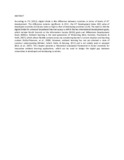| dc.identifier.citation | Mwendia, S. N., Wagacha, P. W., & Oboko, R. (2015). Ambient Learning Conceptual Framework for Bridging Digital Divide in Higher Education. In J. Keengwe (Ed.), Promoting Active Learning through the Integration of Mobile and Ubiquitous Technologies (pp. 235-264). | en_US |
| dc.description.abstract | According to ITU (2012), digital divide is the difference between countries in terms of levels of ICT development. This difference remains significant. In 2011, the ICT Development Index (IDI) value of developed countries (6.52) was twice as high as that of developing countries (3.24). The need to link the digital divide for universal broadband Internet access is within the key international development goals, which include World Summit on the Information Society (WSIS) goals and Millennium Development Goals (MDGs). Ambient learning is the next generation of M-learning (Bick, Kummer, Pawlowski, & Veith, 2007), which allows flexible content access by considering learner's current situation and learning context (Kofod-Petersen, et al., 2008). However, ambient learning has not yet attained a state of common understanding (Winker, Scharf, Hahn, & Herczeg, 2011) and is not widely used or adopted (Bick, et al., 2007). This chapter presents a theoretical conceptual framework to foster creativity for innovative ambient learning applications, which can be used to bridge the digital gap between universities in developed and developing countries. | en_US |

